|
Frecuency response curve
The frequency response curve (FRC) is already explained. Here you can see the FR curves of both tapes, recorded and playen in the same D6C:
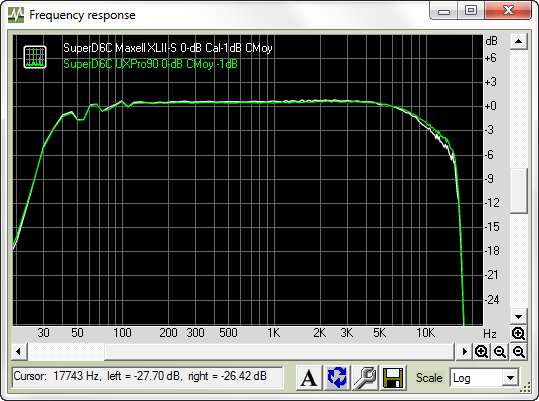
Where the most noticeable difference is that the curve is not so straight as the digital devices shown previously. Well, that's part of the analogic world. These devices are not so "perfect" as modern digital devices, but they have more soul and a warm sound. More on, the more "plain" is the FR of a device doesn't mean that it simply sound better. I have digital players like Discmans of MP3 players and phones and they sound simply awful compared to many tape walkmans. But this is something that we can spent many time discussing and I will write a future article about it.
Apart from that, you can see pretty similar curves, with only a slightly margin in the UX Pro, so I'll choose that tape.
Background noise
Another interesting measure is the background noise level. This measure (expressed in dB) tells us how much noise is there compared to the highest sound achievable WITHOUT distortion. This means that to measure the noise, first we have to adjust all parameters so we can do a record of a sound at the highest level possible on that tape, without distorting it. Then, we simply play a segment of the tape where we don't have anything recorded, so we can measure the noise. The lower the noise, the better the device. Measuring the volume difference (in dB) between the recorded sound and the noise we can get a precise idea of how good that walkman+tape performs. This noise measure is almost the same that the dynamic range.
For this purpose I record putting an eye on the VU meter of the D6C and adjust the record level so it reachs 0dB but not +3dB. This can be easily done with this great recorder.
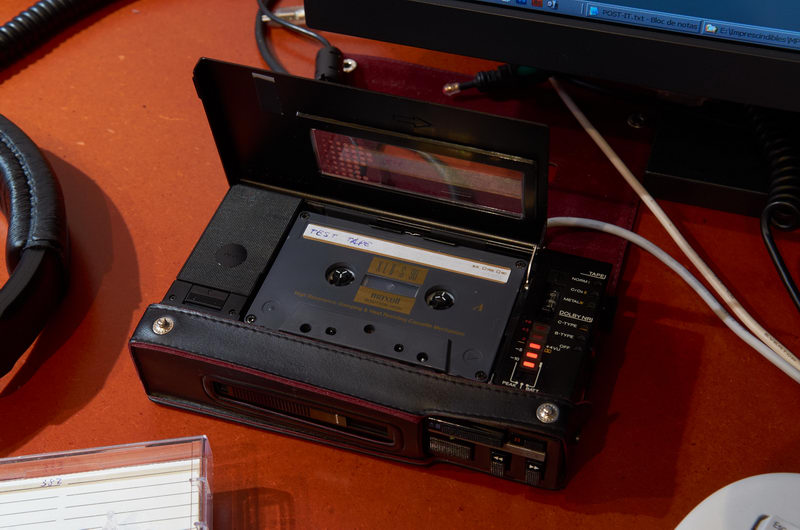
This measure is very important for music that has low volume or very few instruments, because when there are so many, noise is barely perceived (like with live rock music). This is the background noise of the D6C:
And this is the same noise, amplified 30dB:
As you see in the main result window, I can achieve about -60dB of noise with this tape, whithout using dolby at all, which is a pretty good value:
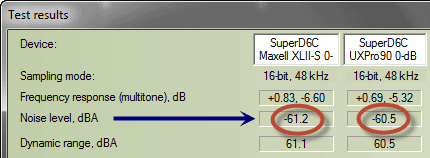
60dB under 0 reference level is one of the best values you can achieve with a good deck. Better values can be reach using Dolby systems.
Using TrueRTA analysis software it's possible to make a better analysis, so I can see how the background noise actually is:
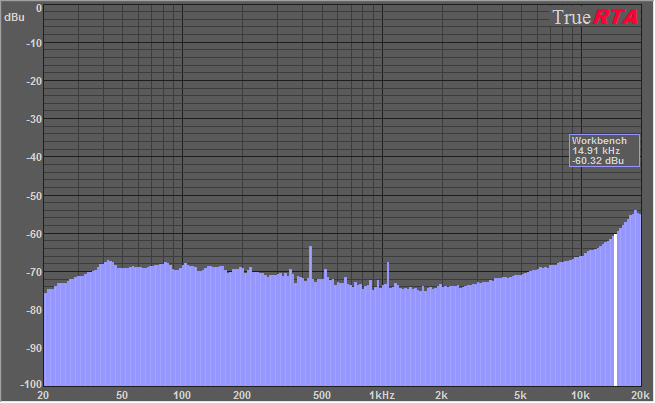
Background noise of the Sony D6C. The volume level at 15kHz indicates the noise level.
We can see here that it's -60.32dB, almost the same value of -60.5dB that RMAA showed.
And here you can see the real difference in the background noise between using Dolby B, Dolby C and no reduction at all:
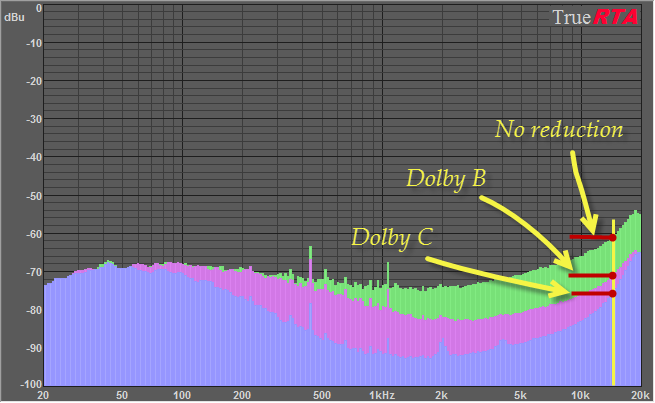
Background noise of the Sony D6C. The volume level at 15kHz indicates the noise level.
For reference, this is the background noise of the D6C using Dolby B (a precise real recording, so you can have an idea of how really is):
And this one, with dolby C (again, a precision recording with real noise level):
However, using Dolby usually makes the sound dull, because it often cuts so much the high frecuencies. So another interesting measure will be how a player does it perform using Dolby.
|
![]()
![]()
![]()
